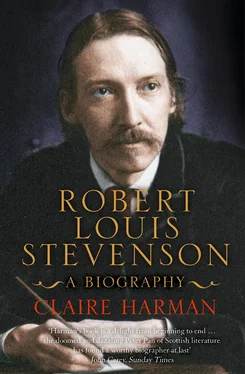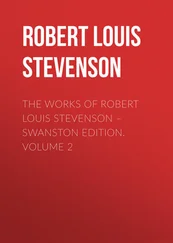1 ...8 9 10 12 13 14 ...32 Lewis became artful enough to know when to keep his mouth shut, as an incident which he related to Edmund Gosse in 1886 illustrates. When he was about twelve years old, he was so gripped by the romance and mystery of an empty house with a ‘To Let’ sign on it that he broke in by climbing through a rear window. Elated by his burgling skills, the boy then took his shoes off and prowled round, but once in the bedroom, thought he could hear someone approaching. Panic overcame him and he scuttled under the bed with his heart pounding. ‘All the exaltation of spirit faded away. He saw himself captured, led away handcuffed,’ and worst of all in his vision of retribution, he saw himself exposed to his parents (on their way into church) and cast off by them forever. This was such an alarming image that he lay under the bed sobbing uncontrollably for some time before realising that no one was in fact coming to get him, so he crept out and went home ‘in an abject state of depression’. He was incapable of explaining to his parents what had happened, and their concern redoubled his guilty feelings, sending him into hysterics. During the evening, as he lay recuperating, he heard someone say ‘He has been working at his books a great deal too much,’ and the next day he was sent for a holiday in the countryside. 64
More education was ventured sporadically, the last being at a private day-school in Edinburgh for backward and delicate children. Mr Thomson’s establishment in Frederick Street, which admitted girls as well as boys and whose regime did not include homework, was the softest possible cushion upon which to place young Lewis. As far as his father was concerned, the boy’s eventual career was never in doubt; he would join the family firm. Therefore formal schooling was of minor importance: the greater part of his training would be got by observation and example in an apprenticeship. To this end, Thomas took his son on the annual lighthouse tour one year, and attempted to share his own knowledge of engineering and surveying whenever opportunity allowed. There is a touching memory of this in Records of a Family of Engineers :
My father would pass hours on the beach, brooding over the waves, counting them, noting their least deflection, noting where they broke. On Tweedside, or by Lyne and Manor, we have spent together whole afternoons; to me, at the time, extremely wearisome; to him, as I now am sorry to think, extremely mortifying. The river was to me a pretty and various spectacle; I could not see – I could not be made to see – it otherwise. To my father it was a chequer-board of lively forces, which he traced from pool to shallow with minute appreciation and enduring interest. [ … ] ‘[S]uppose you were to blast that boulder, what would happen? Follow it – use the eyes that God has given you: can you not see that a great deal of land would be reclaimed upon this side?’ It was to me like school in holidays; but to him, until I had worn him out with my invincible triviality, a delight. 65
Thomas Stevenson had seen a painting at the Royal Scottish Academy exhibition titled Portrait of Jamie by James Faed, depicting an adolescent boy posed with a microscope. He wrote to Faed asking if a similar portrait could be made of his son and was told that the artist didn’t do much in that line, but would take a look at the boy and see if he thought he could paint him. Faed was surprised to get a reply saying that Mr Stevenson had been back to look at the ‘Jamie’ portrait again and had changed his mind, feeling his son was ‘too stupid looking to make a picture like that’. 66 The incident stuck in Faed’s mind and thirty years later he offered it to Stevenson’s cousin Graham Balfour as a biographical curiosity (Balfour didn’t use it): the father’s turn of phrase was so odd and unsentimental. Odder still is the thought of Thomas Stevenson veering so completely between two different images of his son, one minute picturing him as a budding scientist, the next as too stupid-looking to be scrutinised.
* I am grateful to John Macfie for telling me an interesting fact about the real lamplighter on Heriot Row in the 1850s: he was a piece-worker, and therefore habitually rushed his work. So the ‘hurrying by’ of the poem is more realism than romance.
* It is not known who Smith learned from, but it could have been John Smeaton, who built the third Eddystone light in the 1750s, and whose work was very influential on the whole Smith/Stevenson family.
* The fourth son, Robert (1808–51), took a degree in medicine at Edinburgh University and became an army surgeon. He left his whole estate to his youngest brother, Thomas.
Facts bearing on precocity or on the slow development of the mental powers, deserve mention.
Francis Galton, Record of Family Faculties
WHEN BOB WENT UP to Sidney Sussex College, Cambridge, in the autumn of 1866, fifteen-year-old Lewis was eager for details, and more than a little jealous: ‘Do Cambridge students indulge in a private magazine: if so, full particulars?’ 1 He himself was still at Mr Thomson’s school and bound on a different course, taking classes in practical mechanics and being given extra maths lessons in order to matriculate at Edinburgh University the next year as a student of engineering. Thomas Stevenson must have realised by this time that even if Lewis went through the hoops of getting a degree in sciences, he was temperamentally unsuited to become an engineer. Still they stuck to the known path, the father no doubt rationalising that his own reluctance to join the family firm years before had been proved wrong. His working life had been immensely useful and productive (not least of money), and his early leanings towards authorship had not been entirely abandoned. Had not his book on lighthouse illumination and his article on ‘Harbours’ for the Encyclopaedia Britannica been composed in hours of leisure, the proper place for letters?
Robert Louis Stevenson’s first publication, a privately-printed sixteen-page monograph called ‘The Pentland Rising: A Page of History’, fell entirely in the gentleman-amateur tradition that his father favoured. It would not have escaped a man like Thomas Stevenson, so keenly aware of the energy potential in a wave and the importance of building a structure of exactly the right size and shape to harness or withstand it, that the intellectual energy Lewis expended on his feverish recreation might be redirected towards some serious and worthy project. The boy’s interest in the Covenanters had been expressed in some highly inappropriate forms up to this point; he had started a romance based on the life of David Hackston of Rathillet, one of the fanatics who had murdered Archbishop Sharp, and in 1867–68 began a five-act tragedy on another Covenanting subject, ‘The Sweet Singer’. A work of a historical or overtly religious nature would have been far more suitable, and it was in such a direction that Thomas and Margaret Stevenson now steered their son,.offering to pay for the production of one hundred copies of a short history to coincide exactly with the two hundredth anniversary of the Covenanters’ defeat at Rullion Green on 28 November 1666. Getting the boy’s name into print, in a controlled and circumscribed way, was clearly a kind of reward and encouragement, but also an inoculation against becoming ‘literary’.
Lewis must have been happy with the arrangement, for he took care to make his account of the Rising as serious and scholarly as possible, with an impressive list of references (including Wodrow, Crookshank, Kirkton, Defoe, Bishop Burnet) and a stirring, sermon-like conclusion. Still it didn’t much resemble a conventional history. The facts were there, but re-imagined by the fifteen-year-old into gripping narrative:
Читать дальше












